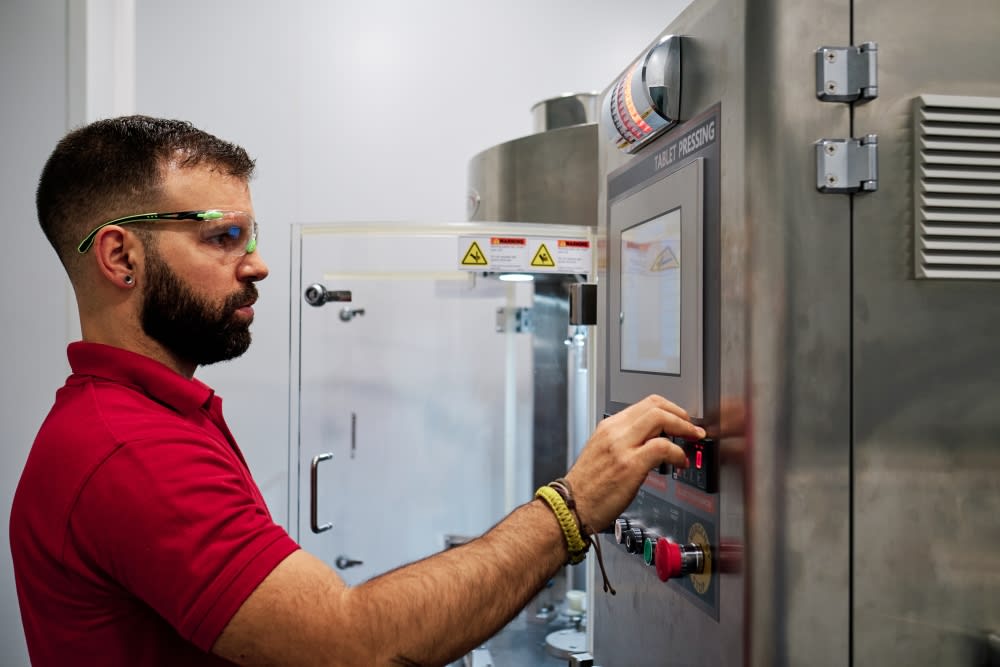- Published 22 Feb 2024
- Last Modified 6 Mar 2024
- 7 min
Mastering Key Switches: Types, Selection Guide, and Best Practices
Explore ignition key switches: types, selection, installation tips, and top brands like Bulgin, Schneider Electric, and Siemens for optimal use.

In the diverse world of industrial and commercial electronics, ignition key switches hold a significant yet often understated role. These vital components not only initiate operations in various systems but also ensure security and control in a wide range of applications.
From the heavy-duty machinery of a manufacturing floor to the delicate interfaces of consumer electronics, ignition key switches are fundamental in controlling power and function across diverse applications in Australia.
In this article, we explore the different key switch types, how to select them effectively, and the best practices for their use. By mastering the intricacies of key switches, you can make informed decisions, elevating the efficiency and safety standards of your operations.

Understanding Key Switches
So, what is a key switch? Ignition key switches are devices designed for the dual purpose of control and security in electrical and electronic systems. Their basic function lies in controlling the access or activation of these systems, ensuring that only authorised usage is permitted.
In industrial settings, they are indispensable for operating heavy machinery and ensuring machine safety, while in commercial spaces, they form the backbone of security systems. In terms of Australia’s automotive sector, the demand and supply of these ignition key switches offer employability while contributing to the country’s economy and communities at large.
As such, understanding the role of ignition key switches is the first step towards appreciating their importance across a spectrum of applications – from ensuring operational safety in Australia’s industrial environments to providing the tactile response in consumer electronics that users have come to expect.
Types of Key Switches
Key switches come in various forms, each suited to specific applications and environments. Here’s an overview of several ignition switch types:
- Mechanical Key Switches: Known for their durability and distinct tactile feedback, mechanical key switches are preferred in environments where physical response and longevity are crucial. Their construction ensures a long lifespan even under rigorous usage.
- Membrane Key Switches: With their low-profile design, membrane key switches are ideal for applications where space is at a premium and cleanliness is vital. They offer a quieter and softer operation, suitable for controlled environments.
- Capacitive Switches: Praised for their longevity and minimal physical wear, capacitive switches are increasingly becoming the standard in advanced technological applications due to their speed and reliability.
Understanding the pros and cons of each type is crucial in selecting the right switch for the intended application, ensuring both functionality and durability.
Factors to Consider When Selecting Key Switches
When it comes to selecting the right ignition switch, several factors come into play:
- Durability: Durability is paramount, particularly in industrial settings where key switches must withstand rigorous use. The material quality and construction of the switch determine its lifespan under various conditions.
- Activation Force: This is another important factor affecting both the user experience and the suitability of the ignition key switch for different applications. A higher activation force might be suitable for heavy-duty applications, whereas a lower force is preferable in delicate electronics.
- Tactile Feedback: A key feature in mechanical switches, tactile feedback plays a significant role in user interaction, offering a physical confirmation of the switch's activation.
- Environmental Conditions: Factors like humidity, temperature, and dust exposure must be considered to ensure the key switch’s performance and longevity in specific operational environments.
Application-Specific Selection

The process of choosing the right key switch is highly dependent on the specific application it is intended for. In industrial controls, ignition switches must be robust and resilient, capable of withstanding the rigours of a demanding environment.
Meanwhile, fire alarm systems require switches that offer swift and unmistakable activation. Data cabinets and servers demand switches that are precise and occupy minimal space. For heavy-duty machinery, the emphasis is on durability and the ability to withstand harsh operational conditions.
As such, tailoring the key switch type to the application not only ensures optimal functionality but also enhances the safety and reliability of the system.
Installation and Maintenance Tips
The effective functioning and longevity of ignition switches are heavily reliant on their proper installation and maintenance. Correct installation — adhering to specific wiring colour codes and guidelines — is crucial in preventing operational failures and ensuring safety.
Additionally, regular maintenance, which includes routine cleaning, inspection, and replacement, is essential for the early detection of wear and potential issues, thereby extending the life of the ignition switch. Following the manufacturer's guidelines and adhering to Australian standards are also vital for maintaining the high performance and reliability of these components.
Elevate Your Operations with the Right Key Switch
Understanding and mastering the selection and application of key switches are key to enhancing operational efficiency and safety in various industrial and commercial settings. By comprehensively exploring the different types of switches, considering important selection factors, and tailoring choices to specific applications, you can significantly improve the performance and reliability of their systems.
For a wide array of high-quality key switches that cater to these diverse needs, RS Australia stands as a premier choice, offering a selection that adheres to the highest standards of quality and safety. Discover our range and equip your operations with the best ignition switches, tailored to meet and exceed your operational requirements.
Popular Key Switch Brands
Bulgin
Bulgin stands at the forefront of innovation in the electrical component industry, offering a robust portfolio of connectors, switches, and power supplies. Recognised for their quality and durability, Bulgin key switches are engineered to meet the rigorous demands of both industrial and commercial applications.
Schneider Electric
Schneider Electric is a globally renowned name in the realm of electrical components, including key switches, and are synonymous with cutting-edge technology and sustainability. Their extensive product range includes everything from advanced power distribution systems to automation and control solutions.